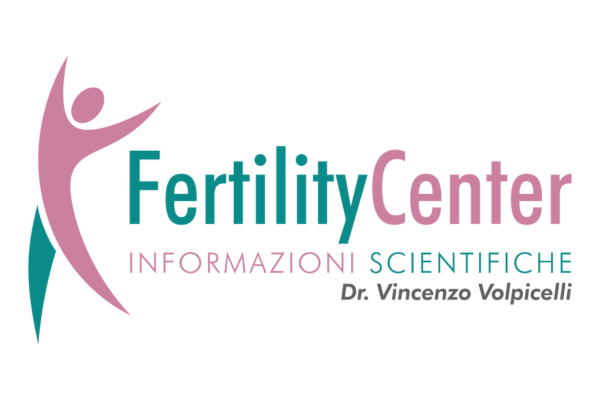I recettori degli oppioidi sono dei tipici recettori accoppiati alla proteina G (GPCR) (mdm 10-2004) che si legano al neurotrasmettitore all’esterno della cellula e lanciano una risposta amplificata attraverso la proteina G all’interno della cellula.
Vi sono quattro classi principali di recettori per gli oppioidi ciascuna sensibile ad uno specifico neuropeptide; queste sono:
- recettori mu detti anche recettori μ; stimolati dalle endorfine generano analgesia a livello sovraspinale, miosi, depressione respiratoria, riduzione motilità gastro-intestinale, euforia;
- recettori k, stimolati dalla dinorfina hanno effetti simili;
- recettori δ stimolati dall’encefalina, non generano analgesia, ma diminuiscono il transito intestinale e deprimono il sistema immunitario.
- NOP-R, quest’ultimo inizialmente indicato come ORL-1 o recettore FQ della nociceptina/orfanina
I recettori di tipo μ sono i più diffusi e mediano la maggior parte degli effetti farmacologici degli analgesici oppiacei. Possono trovarsi sia in posizione pre-sinaptica che post-sinaptica a seconda del tipo di cellule. I recettori μ-oppioidi esistono principalmente nelle presinapsi nella sostanza grigia periacqueduttale, e nel corno dorsale superficiale del midollo spinale (nella sostanza gelatinosa di Rolando). Altre aree dove sono stati individuati i recettori μ includono lo strato plessiforme esterno del bulbo olfattivo, il nucleus accumbens, diversi strati della corteccia cerebrale e alcuni dei nuclei dell’amigdala, così come il nucleo del tratto solitario.
La flogosi dei tessuti periferici induce nei neuroni afferenti primari, in particolare a livello dei corpi cellulari situati nei DRG (gangli della radice dorsale) un aumento della sintesi di recettori oppioidi determinandone un “up-regulation”.
I suddetti recettori vanno a legarsi agli oppioidi prodotti dalle cellule immunitarie o a quelli esogeni. Questi legami portano a una diretta o indiretta soppressione delle correnti di Ca++ o di correnti del Na+ con conseguente ridotta eccitabilità del neurone e diminuzione dei segnali trasmessi.
References:
- JV Pergolizzi, JA LeQuang, GK Berger & RB Radda (2017) The basic pharmacology of opioids informs the opioid discourse about misuse and abuse: a review. Pain Therapy 6, 1-16.
- P Kumar, V Reithofer, M Reisinger, S Wallner, T Pavkov-Keller, P Macheroux & K Gruber (2016) Substrate complexes of human dipeptidyl peptidase III reveal the mechanism of enzyme inhibition. Scientific Reports 6, 23787.
- C Stein (2016) Opioid receptors. Annual Review of Medicine 67, 433-451.
- Y Shang, M Filizola (2015) Opioid receptors: structural and mechanistic insights into pharmacology and signaling. European Journal of Pharmacology 763, 206-213.
- GA Bezerra, E Dobrovetsky, R Viertlmayr, A Dong, A Binter, M Abramic, P Macheroux, S Dhe-Paganon & K Gruber. Entropy-driven binding of opioid peptides induces a large domain motion in human dipeptidyl peptidase III. Proceedings of the National Academy of Science USA 109, 6525-6530.
- S Granier, A Manglik, AC Kruse, TS Kobilka, FS Thian, WI Weis & BK Kobilka (2012) Structure of the delta opioid receptor bound to naltrindole. Nature 485, 400-404.
- A Manglik, AC Kruse, TS Kobilka, FS Thian, JM Mathiesen, RK Sunahara, L Pardo, WI Weis, BK Kobilka & S Granier (2012) Crystal structure of the mu-opioid receptor bound to a morphinan antagonist. Nature 485, 321-326.
- AA Thompson, W Liu, E Chun, V Katritch, H Wu, E Vardy, XP Huang, C Trapella, R Guerrini, G Calo, BL Roth, V Cherezov & RC Stevens (2012) Structure of the N/OFQ opioid receptor in complex with a peptide mimetic. Nature 485, 395-399.
- H Wu, D Wacker, M Mileni, V Katritch, GW Han, E Vardy, W Liu, AA Thompson, XP Huang, FI Carroll, SW Mascarella, RB Westkaemper, PD Mosier, BL Roth, V Cherezov & RC Stevens (2012) Structure of the human kappa opioid receptor in complex with JDTic. Nature 485, 327-332.
- Abbadie C, Pan YX, Pasternak GW. Immunohistochemical study of the expression of exon11-containing mu opioid receptor variants in mouse brain. Neuroscience. 2004;127:419–30.
- Bartenstein PA, Duncan JS, Prevett MC, Cunningham VJ, Fish DR, Jones AK, et al. Investigation of the opioid system in absence seizures with positron emission tomography. J Neurol Neurosurg Psychiatry. 1993;56:1295–302.
- Bartenstein PA, Prevett MC, Duncan JS, Hajek M, Wieser HG. Quantification of opiate receptors in two patients with mesiobasal temporal lobe epilepsy, before and after selective amygdalohippocampectomy, using positron emission tomography. Epilepsy Res. 1994;18:119–25.
- Baumgartner U, Buchholz HG, Bellosevich A, Magerl W, Siessmeier T, Rolke R, et al. High opiate receptor binding potential in the human lateral pain system. Neuroimage. 2006;30:692–9.
- Beckett AH, Casy AF. Synthetic analgesics: stereochemical considerations. J Pharm Pharmacol. 1954;6:986–1001.
- Bencherif B, Fuchs PN, Sheth R, Dannals RF, Campbell JN, Frost JJ. Pain activation of human supraspinal opioid pathways as demonstrated by [11C]carfentanil and positron emission tomography (PET) Pain. 2002;99:589–98.
- Bencherif B, Guarda AS, Colantuoni C, Ravert HT, Dannals RF, Frost JJ. Regional mu-opioid receptor binding in insular cortex is decreased in bulimia nervosa and correlates inversely with fasting behavior. J Nucl Med. 2005;46:1349–51.
- Bencherif B, Wand GS, McCaul ME, Kim YK, Ilgin N, Dannals RF, et al. Mu-opioid receptor binding measured by [11C]carfentanil positron emission tomography is related to craving and mood in alcohol dependence. Biol Psychiatry. 2004;55:255–62.


